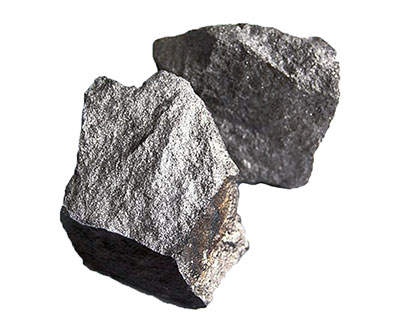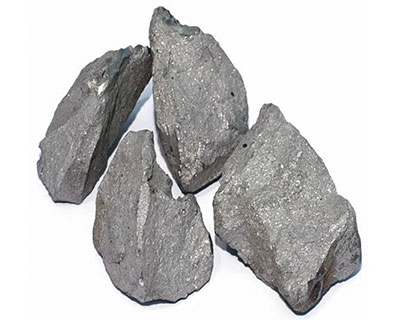English

What are you looking for?
Ferro Tungsten is produced from wolframite through carbon reduction in an electric furnace. Primarily used as an alloying additive for tungsten-based alloy steels (like high-speed steel), it comes in four grades offered by HSG Metal, containing approximately 70% to 80% tungsten content. Due to its high melting point, it cannot be poured as a liquid; therefore, it is manufactured using either the cake method or the iron extraction method.
Tungsten Content: 70% - 80%
Appearance: Silver-gray metal
Composition: Mn, Si, C, S, Cu, P
Size Range: 10mm to 130mm
Packaging Options: Available in 100kg or 250kg steel drums or 1MT big bags
Customization: Available upon customer request
| Ferro tungsten FeW composition (%) | |||||||
| Grade | W | C | P | S | Si | Mn | Cu |
| FeW80-A | 75-85 | 0.1 | 0.03 | 0.06 | 0.5 | 0.25 | 0.1 |
| FeW80-B | 75-85 | 0.3 | 0.04 | 0.07 | 0.7 | 0.35 | 0.12 |
| FeW80-C | 75-85 | 0.4 | 0.05 | 0.08 | 0.7 | 0.5 | 0.15 |
| FeW70 | ≧70 | 0.8 | 0.06 | 0.1 | 1 | 0.6 | 0.18 |
| Property | Description |
| Chemical Composition | Primarily iron (Fe) and tungsten (W), typically 70% to 80% tungsten by weight. |
| Atomic Number (Fe) | 26 (iron) |
| Atomic Number (W) | 74 (tungsten) |
| Molecular Formula | FeW |
| Density | Typically ranges from 9.8 to 11.0 g/cm³ |
| Melting Point | Approximately 3410°C (6170°F) |
| Boiling Point | Approximately 5900°C (10650°F) |
| Solubility in Water | Insoluble |
* As one of the most experienced ferro tungsten suppliers, we also provide other ferroalloy products, including ferro molybdenum, ferro vanadium, and ferro niobium. If you are interested in our ferroalloy products, click and check out more details. Or you can contact us directly.
Ferrotungsten (FeW) is a metallic alloy formed by combining iron and tungsten, primarily utilized in the manufacturing of steels containing tungsten. It belongs to the ferroalloy series. The commonly used tungsten iron has two kinds of 70% tungsten and 80% tungsten. Tungsten iron smelting with an electric furnace, because of the high ferro tungsten melting point, can not release liquid, so the use of the agglomerating method or iron production. Before the 1930s, a small (100 ~ 500 KVA) single-phase electric arc furnace was generally used for agglomerating smelting, and later, the three-phase electric furnace was used, and the iron extraction process was developed.
Depending on its tungsten content range, ferro tungsten typically exists in two grades (A and B) with tungsten content ranging from 75% to 82% and 70% to 75% respectively. Renowned for its high melting point (The ferro tungsten melting point is typically between 3410°C to 3420°C.), this master alloy is robust. Through the amalgamation of iron and tungsten, Ferro Tungsten effectively overcomes the inherent brittleness of raw tungsten, resulting in a durable material.
HSG Metal is one of the most professional ferro tungsten suppliers and manufacturers in China. We have different grates of ferro tungsten for sale. There's always one to suit your needs. If you are interest in our products, please feel free to contact us and get ferrotungsten price today!
As an additive in the production of ferro alloys types metals, tungsten-iron will give the new alloy some desirable properties. Ferro tungsten is prized for its exceptional hardness, high melting point, wear resistance, and efficient electrical conductivity, making it a valuable addition to various alloys and materials in industries requiring these properties.
One of the main benefits of adding tungsten-iron to alloys is to increase the hardness and the melting point of the alloys, making them suitable for aerospace applications as well as welding applications. It can be used in mining and drilling equipment to enhance tool durability.
Besides, by adding tungsten-iron to the alloy, one can take advantage of the unique electrical properties of tungsten as a conductor. It can be applied in electrical and electronic components where high-temperature resistance and efficient electrical conductivity are paramount.
Additionally, it finds use in the automotive industry, in radiation shielding materials, in welding electrodes, and in heavy machinery.
HSG Metal, as a well-established manufacturer specializing in refractory metals and one of the leading ferro tungsten suppliers in China, can produces high-quality products for our customer's specific ferro tungsten uses. If you are looking for a reliable partner for ferrotungsten supplying, don't hesitate to contact us to get our reasonale ferro tungsten price.


The basic ferro tungsten production process is: mining the mineral, changing it into oxides of tungsten, then adding hydrogen or carbon to heat it in order to produce a powder shape for mixing with the iron. Ferro tungsten is usually packaged in 5mm to 100mm particle size and 100kg iron drums by refractory metal suppliers. Ferro tungsten is melted by electric furnace. Due to its high melting point, it cannot be released in liquid state, so it is produced by agglomeration method or iron extraction method. Before the 1930s, small-scale (100~500 kVA) single-phase electric arc furnaces were generally used for agglomeration smelting, and later, three-phase electric furnaces were used, and iron extraction methods were developed.
HSG Metal uses the advanced ferro tungsten production process, and strictly control the quality in the production. If you are looking for ferro tungsten suppliers, please feel free to contact us.

· High tungsten content (typically 70% to 80%)
· Dense and heavy material
· High hardness and strength
· Excellent wear resistance
· Good heat resistance
· Can exhibit magnetic properties
· Moderate electrical conductivity
· Good corrosion resistance
The refractory metal products are particularly important that tungsten has a good influence on the mechanical properties of steel at high temperature, which can improve the heat resistance and tempering stability.
Because of the ferro tungsten price, tungsten can not only reduce the elongation of steel, but also increase the strength limit and yield point of steel, and improve the hardness and wear resistance of steel.
In steel, tungsten combines with carbonation to form carbides and partially dissolves into iron to form solid solutions. Tungsten has little effect on the hardenability of steel. Its main use in steel is to increase the tempering stability, red hardness, and thermal strength of steel, and because of the formation of special carbide and increased wear resistance, so it is used in tool steel, high-speed steel, hot forging die steel, and so on.